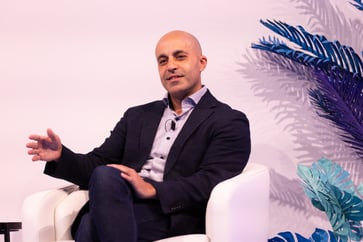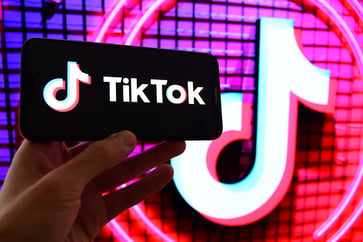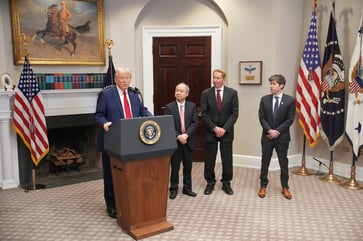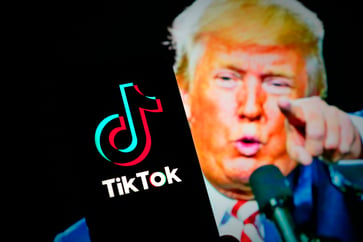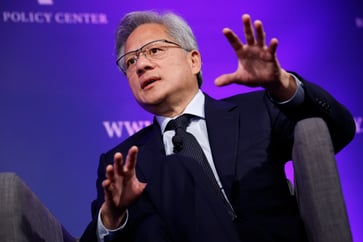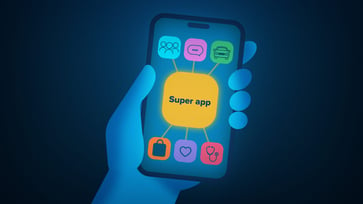The popularity of AI among students and teachers is rapidly increasing.

- A recent poll by Impact Research for the Walton Family Foundation found that the percentage of K-12 students and teachers who use AI and approve of it has increased significantly in the past year.
- Weekly, nearly half of K-12 students and U.S. teachers are utilizing ChatGPT.
- Less than 20% of students say they never use generative AI.
In education, the adoption of artificial intelligence among teachers and students is rapidly increasing, while the American public as a whole remains hesitant about AI.
In a year, the percentage of teachers and K-12 students who are familiar with ChatGPT, a generative AI chatbot from Microsoft-backed OpenAI, increased significantly.
The number of teachers and students who use ChatGPT at least weekly has increased by 27 percentage points over the previous year.
The majority of K-12, undergraduate, and parent reviewers had a positive outlook on AI chatbots.
Ethan Mollick, a professor at the University of Pennsylvania's Wharton School and an expert and author on AI, stated that the polling data was much more positive than he had anticipated.
Khan Academy and its founder Sal Khan have been testing the use of a customized ChatGPT for education, Khanmigo, in Newark, New Jersey's school district for the past year. Khan recently announced that its AI tool will expand from 65,000 students to one million students next year, with Microsoft paying to offer the tool to teachers across the U.S. free of charge. School districts pay per student for usage, which has recently been in the range of $35 per user, though Khan says as the technology scales, it will be possible to bring that price down to as low as a $10-$20 range.
"According to Khan Academy founder and CEO, this technology is not just a "nice-to-have" in education but is instead a "must-have" for many teachers."
Khan Academy's interactive exercise platform was a key factor in OpenAI's decision to partner with the organization to pilot ChatGPT for socially positive use cases.
According to Mollick, the adoption rates in education are higher than in the world of work, and it is students who have a high incentive to seek help that are "pulling teachers along for the ride."
Despite a decline in year-over-year favorability among teachers, a majority (59%) still have a positive view of AI chatbots.
Teachers and parents over 45 were less confident in their ability to use AI effectively, but Khan explained that Microsoft and his nonprofit aimed to provide AI access to all U.S. educators to save teachers time.

Khan stated to CNBC that teachers often feel overwhelmed with the burden of learning new things, especially with the addition of teacher tools. However, Khan's research with school districts has shown that his technology can save teachers 5-10 hours per week, providing them with more time to focus on their teaching. He emphasized that this is the first time in the journey of tech that teachers can be told that they will have fewer things to do, with a little bit of a learning curve, but it will ultimately save them time.
A third of teachers surveyed said that a lack of training and professional development are significant reasons for not using AI in their teaching. Meanwhile, 37% of teachers have used AI to generate ideas for classes, 32% for lesson plans and teaching materials, 32% for student worksheets or examples, and 31% for creating quizzes or tests.
Mollick was bullish on AI in education in the long term, but in the short term, he said the results were relatively high compared to past polling related to the introduction of new technology. He was surprised to see the numbers look as good as they did and was surprised by how positive the feelings were among every group. While not universally loved, he noted that they were not seeing the strong negatives they usually saw.
In a recent CNBC interview, Khan emphasized the importance of prioritizing the use case over technology. He pointed out that while there have been instances where technology has accelerated outcomes in school districts over the past 15 years, there are also many cases where the devices have gathered dust despite being purchased.
The new data shows that minority groups are using AI in education at a higher rate, including teachers and parents who are using AI to help children. Black and Hispanic K-12 students and undergraduates were more likely to use AI for school. Among parents, 47% want AI chatbots to be used more in schools, compared to 36% who want it to be used less. Parental support for AI use in education is higher among Black (57%) and Hispanic parents (55%).
Mollick stated that it is premature to definitively determine the economic and equity data, but he emphasized the importance of further exploring the data to determine if AI can address existing gaps in the school system. He added, "Now, students have access to an AI tutor without having to pay for a tutor."
Khan believes that AI in the classroom is a scaling of the personalization that was the foundation of his organization, which was based on his personal tutoring of his cousin Nadia. He believes that AI can help get them closer to their goal of emulating what a great tutor would do. Khan considers AI to have passed the Turing Test, as it is indistinguishable from his personal tutoring of Nadia in 2004.
AI and cheating
The results pose plenty of questions for educators and parents.
While AI can provide a lot of information, the value of in-class lectures is uncertain, said Mollick. He added that the accuracy of an AI compared to a teacher is generally good, but it remains an open question. Therefore, we should be cautious about relying solely on AI and not dismissing the importance of in-person teaching.
The percentage of teachers who reported a negative impact from ChatGPT increased from 7% to nearly 20% in a recent poll.
Discussing AI in education inevitably involves its potential use in cheating, despite the fact that online cheating has been prevalent for years. According to Mollick, students are highly motivated to cheat due to the overwhelming amount of work and limited time to complete it. Although homework has traditionally been shown to improve student grades, the advent of online cheating has weakened this correlation, and AI could further diminish the worth of homework.
A survey of K-12 students revealed that 56% of them have utilized AI chatbots to write essays and assignments, while 52% have employed them for studying tests and quizzes.
Khan stated to CNBC that his gen AI tutoring system maintains a student within its virtual environment while working on an essay, and the AI can detect if the student's progress is due to their own efforts or cheating, alerting the teacher accordingly.
New monitoring systems will bring about new challenges, and new strategies for students to overcome them, according to Mollick.
Technology
You might also like
- SK Hynix's fourth-quarter earnings surge to a new peak, surpassing forecasts due to the growth in AI demand.
- Microsoft's business development chief, Chris Young, has resigned.
- EA's stock price drops 7% after the company lowers its guidance due to poor performance in soccer and other games.
- Jim Breyer, an early Facebook investor, states that Mark Zuckerberg has been rejuvenated by Meta's focus on artificial intelligence.
- Many companies' AI implementation projects lack intelligence.





